Lesson summary
Students will explore the importance of recycling plastics correctly, understand the impact of improper recycling on the environment, and create a science communication piece to encourage better recycling practices in their school and wider community.
Learning intentions:
Students will...
- understand that there are recyclable and non-recyclable materials
- understand how to categorise materials according to their physical properties.
Success criteria:
Students can...
- classify materials into recyclable and non-recyclable categories
- identify one physical property of a certain material that can be used to separate it from other materials
- apply their knowledge about materials to design a way to separate recyclable materials.
Lesson guides and printables
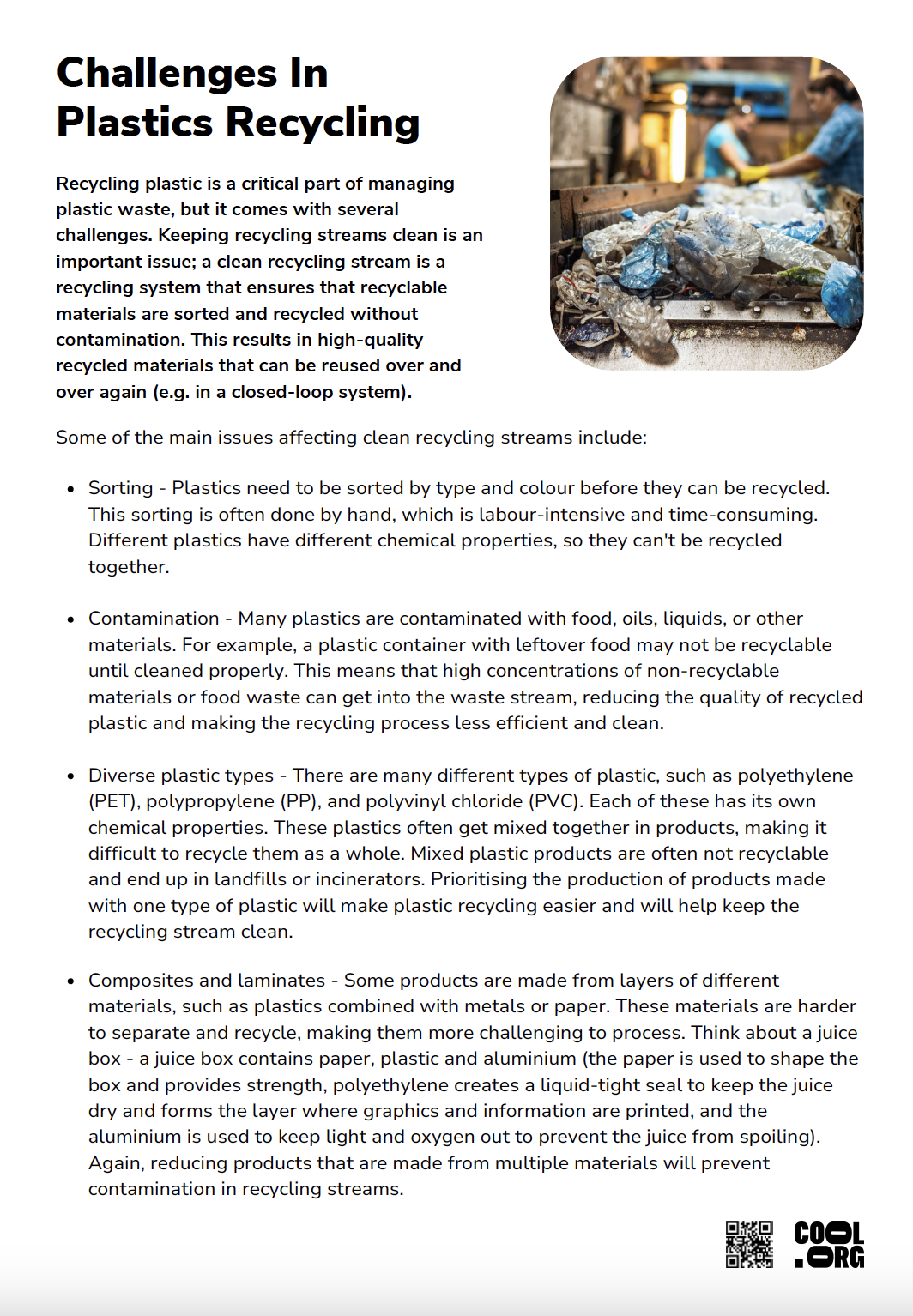
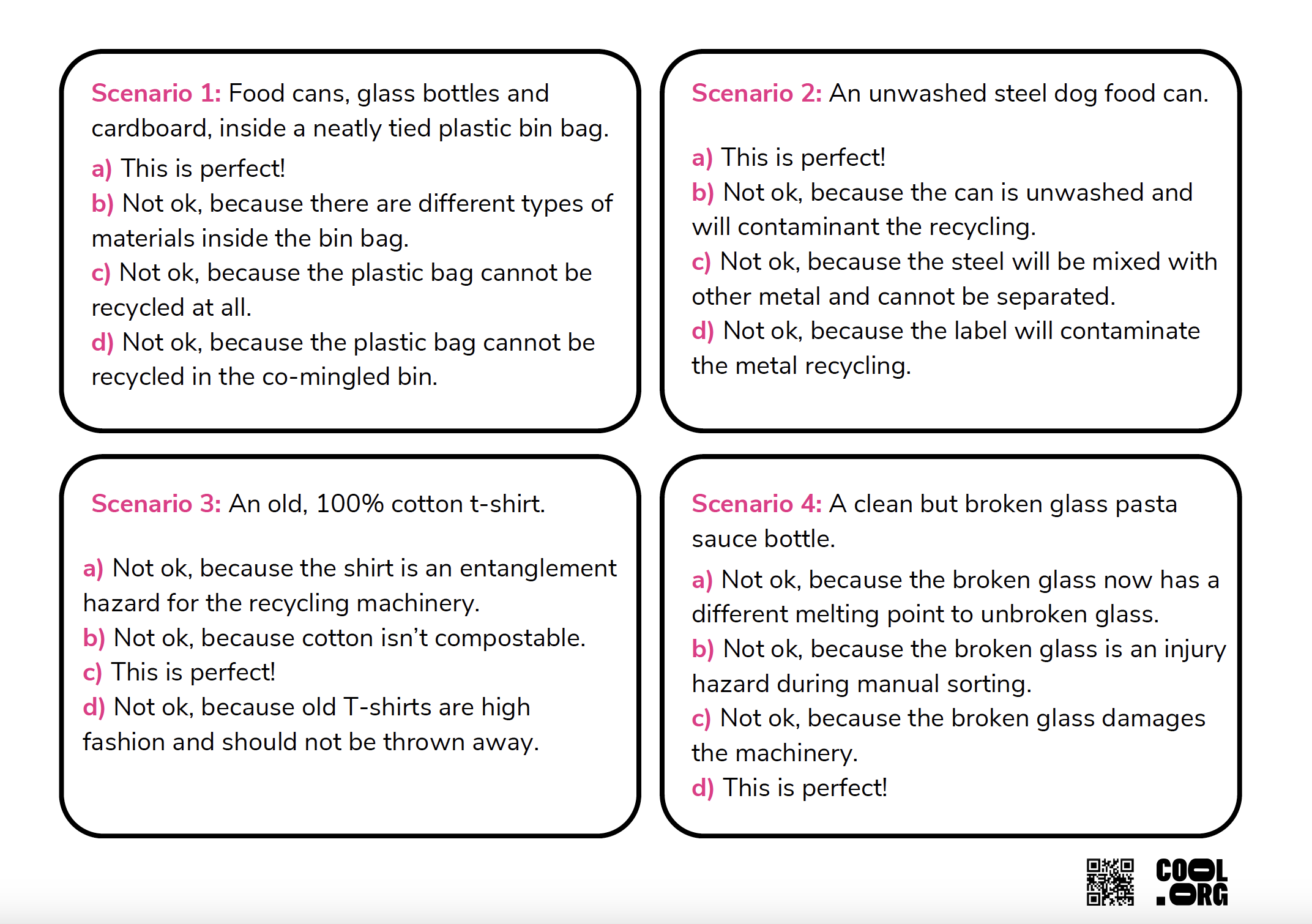
Curriculum links
Select your curriculum from the options below.
Lesson details
Skills
This lesson is designed to build students’ competencies in the following skills:
- creative thinking
- critical thinking
- communication
- community engagement
Curriculum Mapping
Australian Curriculum (v9.0) content description:
Year 7&8, Science
Students learn to
- explore the role of science communication in informing individual viewpoints and community policies and regulations(AC9S8H04)
- examine how proposed scientific responses to contemporary issues may impact society and explore ethical, environmental, social and economic considerations (AC9S8H03).
Relevant parts of Year 7&8 achievement standards: Students analyse the importance of science communication in shaping viewpoints, policies and regulations. They construct evidence-based arguments to support conclusions and evaluate claims. They select and use language and text features appropriately for their purpose when communicating their ideas, findings and arguments to specific audiences.
NSW Syllabus outcomes:
A student
- communicates scientific concepts and ideas using a range of communication forms (SC4-WS-08).
General capabilities: Critical and Creative Thinking, Ethical Understanding, Literacy, Personal and Social Capability
Cross-curriculum priority: Sustainability
Level of teacher scaffolding: Medium – facilitate class game and discussions, and oversee independent tasks.
UN Sustainable Development Goals
UN SDG 12: Ensure sustainable consumption and production patterns
- Target 12.5: By 2030, substantially reduce waste generation through prevention, reduction, recycling and reuse.
Resources Required
Additional Info
This lesson has been developed in partnership with Visy. For over 70 years, Visy has been committed to finding sustainable solutions for Australia's and New Zealand’s recyclables and helping to reduce local landfills. Visy collects, receives, and sorts paper, cardboard, glass, plastics, steel, and aluminium from households, businesses, and schools to reuse these products and re-manufacture new packaging products.
Related Professional Learning
Fit Sustainability Into the Secondary Curriculum
Quick Summary: In this course, you will learn a holistic definition of sustainability, which goes beyond compost bins and solar panels and how to embed sustainability concepts to enrich your current curriculum without it being an add-on.
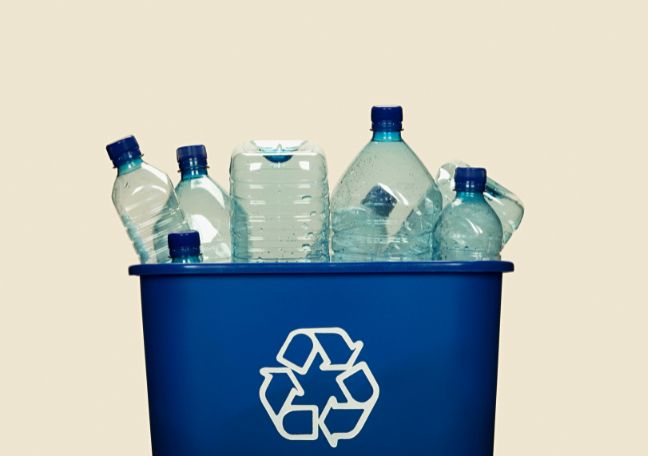
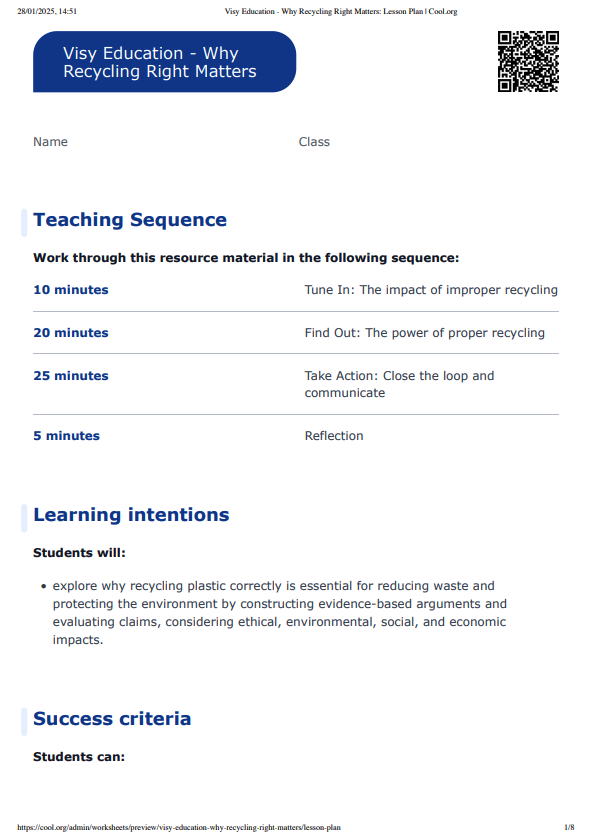
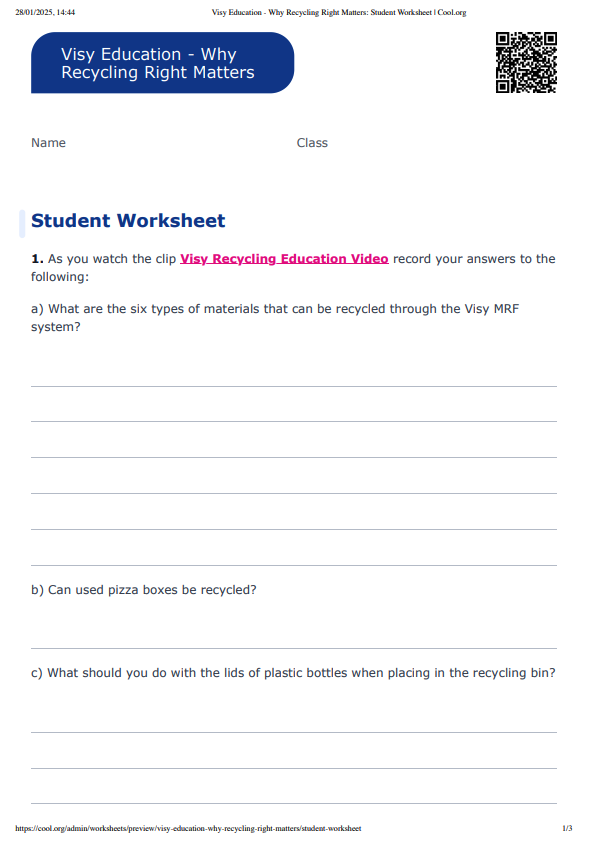
Welcome back!
Don't have an account yet?
Log in with:
Create your free Cool.org account.
Many of our resources are free, with an option to upgrade to Cool+ for premium content.
Already have an account?
Sign up with:
By signing up you accept Cool.org's Terms and Conditions(Opens in new tab) and Privacy Policy(Opens in new tab).